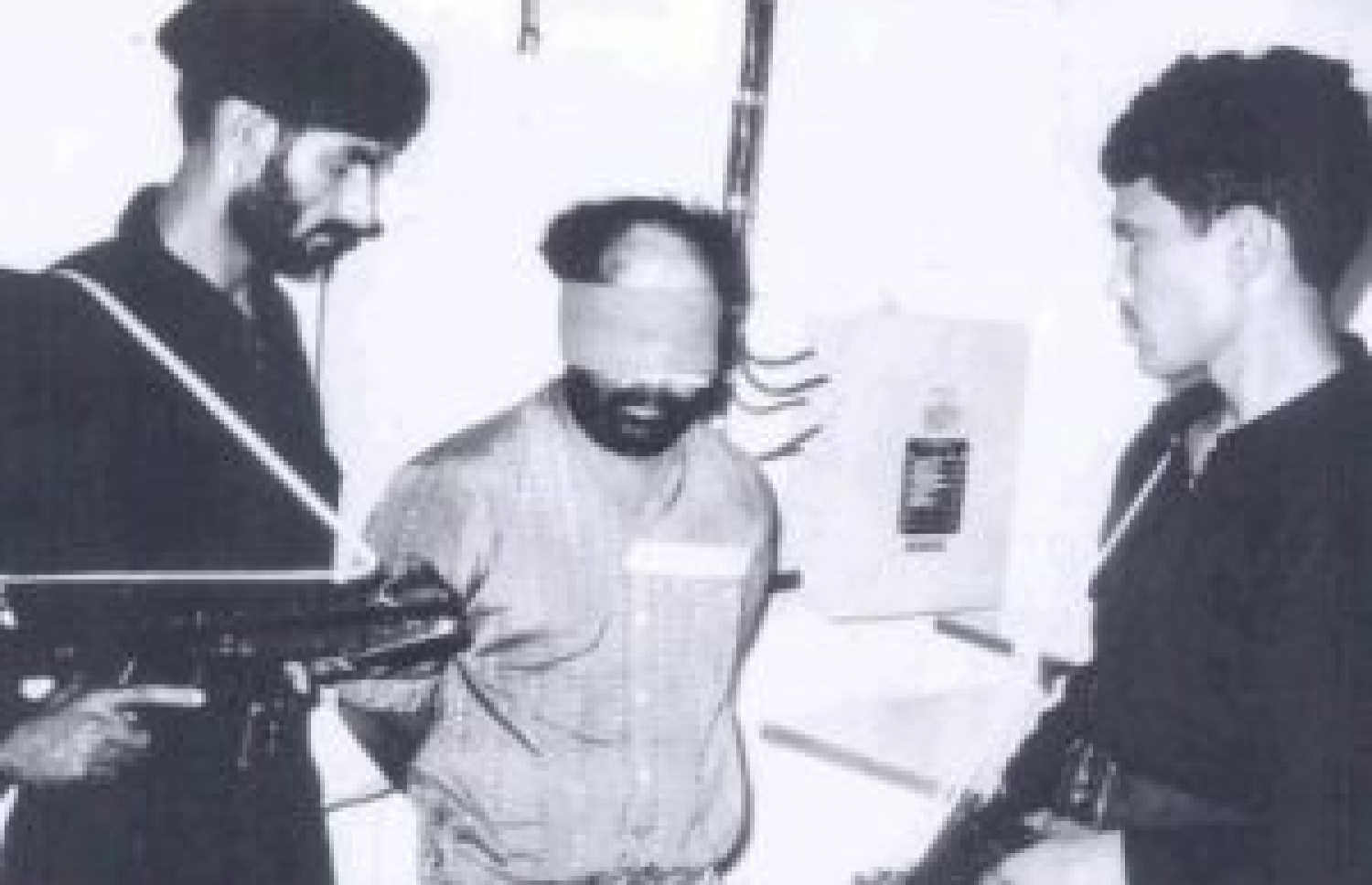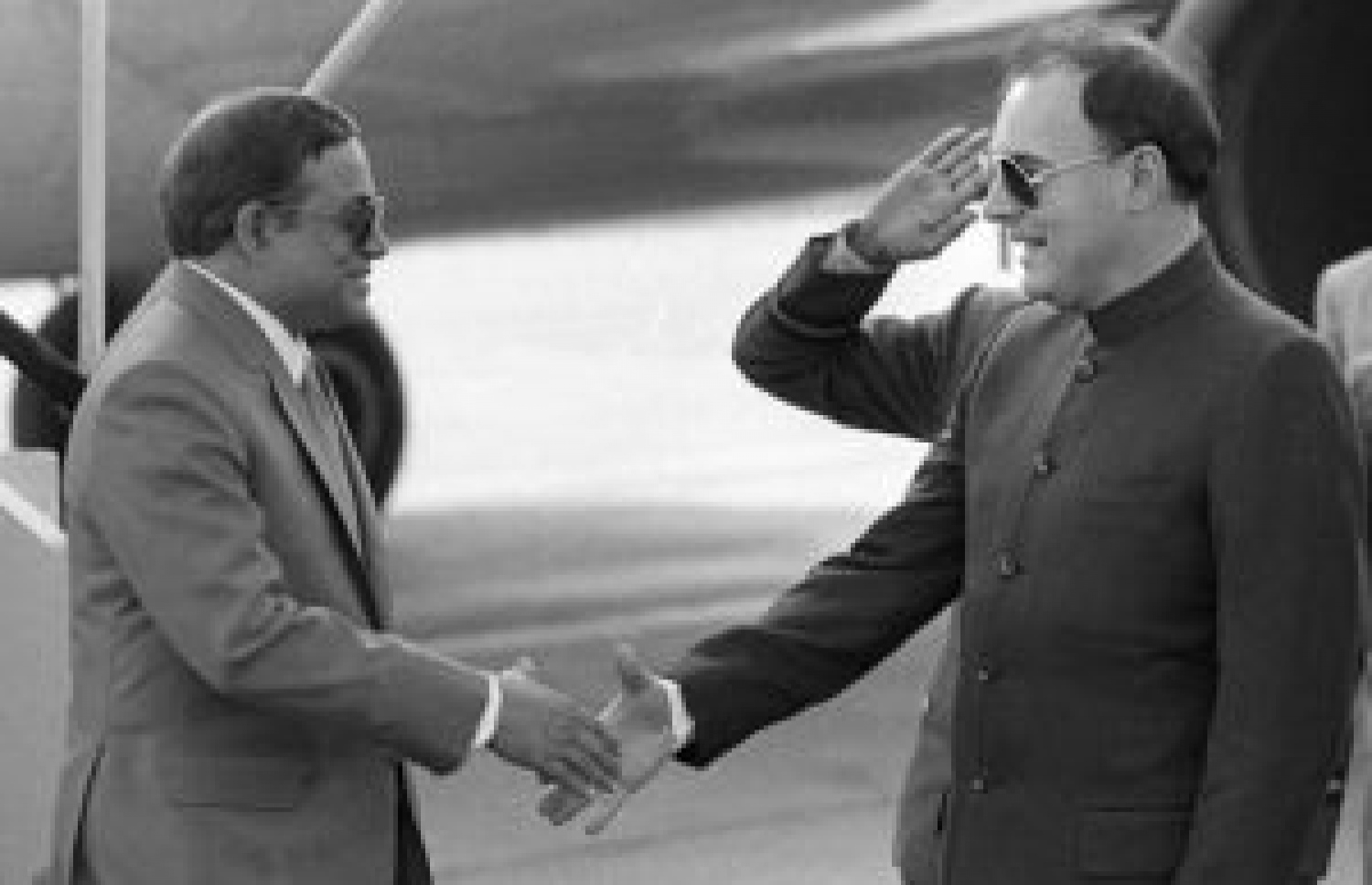November 3 in the year 1988 had also fallen on a Thursday. However, on that day 28 years ago, the peaceful people of capital Male woke not to the song of birds, but the echoes of gunshots. Rampant with danger and terror that were exacerbated with the loss of communication between Male and other islands for over 24 hours, it was a day of massacre, marking one of the bloodiest points in the Maldives’ recent history.
It was a coup d'état led by the traitorous local businessman Abdullah Luthufee of Male and Ahmed “Sagaru” Nasir of Addu atoll Hithadhoo island, who had paid a Sri Lankan militant organisation, the Liberation Tigers of Tamil Eelam, to aid them in overthrowing the government of then president Maumoon Abdul Gayoom.
Dawn was fast approaching as Luthufee, Sagaru Nasir and their Sri Lankan mercenaries crept into Male by sea in the dead of night. They swept across the capital island, sieging state institutions from the President’s Office and military headquarters of National Security Services (now called Maldives National Defence Force) to government offices, hospitals and even the stores along the local market.
The mercenaries had arrived in two power boats at Male’s northern shore. The T-52 boat docked at the presidential jetty, which had been under construction at that time, at around 4:00 a.m. while the other closed in on what is now the commercial harbour at 4:30 a.m.

The armed mercenaries from the first boat were assembling close to the Republic Square when one of their guns accidentally went off, instantly alerting the two soldiers on guard duty at the National Security Services (NSS)’s outdoor security posts nearby. The time then was 4:15 a.m. When the inquiry arrived from within regarding the gunshot’s origin, one of the soldiers, the young corporal Hussain Adam whose quick heroic actions history would remember as pivotal in preventing the insurgents’ takeover of NSS, responded that it had not been caused by the guards. However, he did note that a number of people wearing shorts were gathering at the shore ahead of the military headquarters.
Five minutes later, the terror attack on the Maldives began.
At 4:20 a.m. on November 3, the first offensive gunshots rang out as the Tamil Tiger mercenaries fired semi-automatic rifles at NSS, rendering bullet holes in the walls by the main gate. The echoes of the first round had not faded away when Hussain Adam and Adam Mohamed at the security outposts immediately began to return fire, which was followed by the wail of sirens inside NSS.
Thus the battle began between the Maldivian military and terrorist mercenaries, while the citizens of Male were jolted awake to the roar of guns. While NSS soldiers were engaged in combat, the rest of the mercenary forces had spread throughout Male. One squad commenced attack on the presidential palace of Theemuge, while two other teams went to capture the deputy defence minister Ilyas Ibrahim and the parliamentary speaker Abdulla Hameed. The rest were wreaking havoc across Male, looting shops across the local market.
When the call for Fajr (dawn) prayer was taken up, the Tamil Tigers had established a strong grasp on the Maldives’ capital. With the siege in place, local military forces had no way out of their headquarters, which the mercenaries had failed to breach thanks to Hussain Adam and Adam Mohamed who relentlessly held back the insurgents. The soldiers of NSS foiled every plan of the mercenaries to take over the military base, but Hussain Adam would eventually fall under enemy fire after running out of ammunition, and the Maldives would hail the twenty year old martyr as one of the greatest national heroes of all time.
Meanwhile, mercenary forces were targeting the two northern gates of the presidential palace of Theemuge. They had not been aware then that President Maumoon was in residence, as they had been informed the president was on a visit to India. Though capturing the president was not on their mission agenda, the terrorist group had decided to seize the presidential palace nonetheless as it was an imperative state edifice.

President Maumoon sneaked out of the palace with First Lady Nasreena Ibrahim, their son Ghassan and one of the president’s aides, Adam Naeem, through the western gate of Theemuge.
The group hurried on foot to Gulisthaanu house in Maafannu ward, where the president urgently tried to contact the then Indian Prime Minister Ranjiv Gandhi. He soon delegated the task to the then foreign minister Fathuhullah Jameel for security reasons. Under Fathuhullah’s direction, foreign ministry’s senior undersecretary Ibrahim Hussain Zaki placed the call to India, pleading for military backup.
President Maumoon also requested the assistance of the United States, United Kingdom, Pakistan, Sri Lanka, Malaysia and some other allies of the Maldives in overturning the coup. In response, a battalion of 85 battle ready commandos were assembled at the Sri Lanka Air Force Base Ratmalana in Lankan capital Colombo while Malaysia put together a navy host for the course. US soldiers stationed in the Chagos Archipelago were also put on alert, while the USA and UK chose to team up in assisting India in its preparations to aid in the Maldives’ defence.
In the early hours of November 3, the joint secretary of India’s Ministry of External Affairs received a pressing phone call from its South Asian neighbour, which imparted the shocking news of an attack by armed foreign forces on the Maldives capital, the siege of military headquarters, and that the island president was currently in hiding. The call to India begged for its military assistance in halting the dangerous coup underway.
Indian Army commences Operation Cactus
It was a typical winter morning for the No. 44 Squadron of the Indian Air Force stationed in Agra when the abrupt order came from the Control Room at 7:15 a.m. commanding the squadron to make ready three aircrafts within three hours. The squadron leader acted promptly and three military aircrafts were prepared for immediate take-off by 10:00 a.m.
The military rescue operation which had commenced was code-named “Operation Cactus”.
The squadron’s soldiers were assembled in the briefing room, where the television was turned on to Doordarshan, the national television network of India. The news repeatedly reported a sudden coup underway in the Maldives and that the Indian government had decided to fully aid its neighbour in bringing the overthrow to a stop.
Maps and charts were spread open and discussions commenced on the squadron’s route from Agra to Trivandrum in the south of India before heading off to the Maldives’ main airport island of Hulhule. Faced with the prospect of landing their aircrafts in Hulhule’s runway strip which measured only 7,600 feet in length at that time, the squadron discussed the risks and dangers of landing close to a battle.
At 11:00 a.m. the order came for the pilots and squadron to be prepared for take-off within an hour. By the time the aircrafts were ready, the 50th Independent Parachute Brigade of the Indian Army based in Agra was in a rush with Brigadier Farooq Balsara gathering his troops. While the brigade was split into groups and responsibilities assigned, others on hand were busy preparing weapons and other equipment.
As the time approached for the Indian militia to depart from Agra, the greatest obstacle they faced was the lack of adequate information on Male and Hulhule airport. The Indian army was also not in possession of a detailed chart of the Male region necessary for a military operation, but had instead managed to obtain only a simple map the likes of which were sold to tourists.
Hence, the Indian forces were forced to change their plans several times based on the intelligence they received from Indian capital New Delhi. They gathered from these sources that some 500 terrorists carrying AK-47 assault rifles and RPG weapons had sieged the Maldives capital and taken over its television station, communications centre and important state institutions. They also learned that the terrorists had established their headquarters in a red cargo ship docked at Male harbour.
The one spark of hope they received was that the airport island of Hulhule remained untouched.
(Part 2)